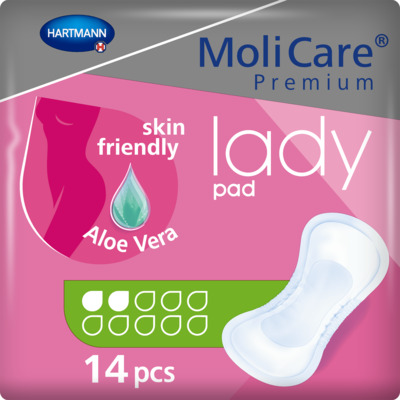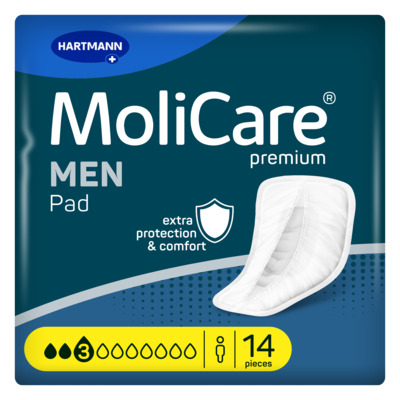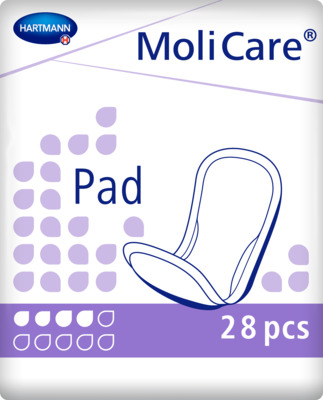Active living
UTIs in the elderly: Signs, symptoms, and prevention
Are urinary tract infections more than just a nuisance for the elderly? This often-overlooked health issue could signal deeper problems. Learn how to prevent UTIs in the elderly with this in-depth article.
Urinary tract infections (UTIs) are infections that involve the bladder, kidneys and the tubes connected to them. They are common among elderly people. In this article, we will look at how UTIs impact the elderly, as well as the types of UTIs that can be encountered, typical and lesser-known symptoms, and why these infections are still prevalent in older adults

Key points
Understand the distinction between lower and upper UTIs.
Recognise the typical and less obvious symptoms.
Learn why UTIs are a frequent issue for the elderly.
Discover prevention tips and how to effectively manage UTIs.
Highlight the importance of timely diagnosis and treatment to prevent complications.
UTIs in the elderly
- Key points
- What are the types of UTIs?
- Why are UTIs common in older adults
- Typical symptoms of a UTI
- Lesser known UTI symptoms in elderly individuals
- Complications
- Why are UTIs more common with dementia patients
- How UTIs affect men and women differently
- Diagnosing a urinary tract infections in older adults
- Tips for preventing UTIs in the elderly
- FAQs
- Sources
What are the types of UTIs?
Urinary tract infections (UTIs), commonly known as ‘urine infections,’ are made up of two main types: lower and upper UTIs.
What are lower UTIs?
These affect the bladder or the urethra – the tube that carries urine out of the body. Left untreated, these can progress to upper UTIs, which are more severe and involve the kidneys or the ureter – the tubes connecting the kidneys to the bladder.
What are upper UTIs?
These involve the kidneys or ureters – the tube that connects the kidneys to the bladder. Upper UTIs are more serious and may lead to kidney damage if not addressed promptly.

Why are UTIs common in older adults?
In elderly people, symptoms can arise more quickly due to several age-related factors that increase vulnerability to infection. As people age, the immune system weakens, making it harder to fight off infections, including UTIs. Other contributing factors include:
Decreased fluid intake: Low fluid consumption reduces the frequency of urination, which prevents the regular flushing of bacteria from the bladder. A high caffeine intake can also irritate the lining of the bladder, creating an environment vulnerable to infection.
Diabetes: Uncontrolled blood sugar levels can result in glucose being passed into the urine, creating a high-sugar environment that promotes bacterial growth.
Urinary retention: A weakened bladder or pelvic floor muscles can lead to incomplete bladder emptying, allowing bacteria to linger and multiply.
Urinary catheters: Catheters can introduce bacteria directly into the bladder, increasing the risk of infection. Since 2017, around 0.73% of elderly patients over 70, and 1.22% over 80 live with a urinary catheter.
Bowel incontinence: Bacteria from the stool, such as E. coli, can enter the urinary tract and cause infections. 1 in 5 elderly adults over the age of 65, as well as over the age of 80, are more likely to face frequent leakages from bowel incontinence leading to a UTI.
Enlarged prostate or immobility: These conditions can make proper bladder emptying more difficult, particularly in men, and prolonged bed rest can increase the risk of UTIs, and bed ridden patients are more likely to contract an infection.
Kidney stones: These can obstruct urine flow, creating an environment where bacteria can thrive.

Typical symptoms of a UTI
Symptoms of a UTI in the elderly can sometimes be atypical and may include non-specific signs such as confusion or general fatigue, often making diagnosis challenging. This is particularly crucial as UTIs can cause dizziness in the elderly, a lesser-known symptom that may lead to falls and serious injuries.
Recognising the signs of a UTI in elderly people is important for early identification and treatment.
Cloudy or unusually dark urine (use this colour of your urine article for guidance)
Presence of blood in the urine
Strong or unpleasant-smelling urine
Increased urgency and frequency of urination
Discomfort or a burning sensation while urinating
A sensation of pressure in the lower abdomen
Mild fever
Night sweats, trembling or chills

Lesser known UTI symptoms in elderly individuals
In the elderly, urinary tract infections are not always present with the same symptoms as in a younger person.
Due to a weakened immune response, common signs (shown above) such as cloudy urine or frequent urination might be absent. Also, if the individual has a condition such as dementia, Alzheimer's disease or has had a stroke, they can often struggle to communicate their discomfort, making a prompt diagnosis more challenging.
This can be further complicated by the fact that a common sign of a UTI in an elderly person is confusion. This may not be recognised as a sign of a UTI, especially if they already have a condition that has caused cognitive decline, and this could make it harder to recognise a UTI as the underlying cause. For carers and family members, this means it is important to stay vigilant and to monitor these subtle signs.
Key atypical symptoms include:
Sudden confusion or delirium, often misinterpreted as cognitive decline.
Unexpected behavioural changes such as increased agitation or hallucinations.
Deterioration in motor skills or coordination, which could manifest as unexplained falls.
Acute changes in behaviour or function, which are critical to monitor, might be the only indicators of a UTI.

Complications
While UTIs are common among the elderly, leaving them untreated can lead to severe health consequences. The progression from a simple bladder infection to a serious kidney infection requires immediate medical attention and often hospitalisation to administer intravenous antibiotics.
Potential complications from untreated UTIs include:
Kidney damage: An infection that spreads to the kidneys can cause lasting damage or kidney disease.
Sepsis: This life-threatening response to infection can spread rapidly, leading to septic shock and potentially fatal outcomes. It also may cause long-term effects such as organ dysfunction and chronic pain.

Why are UTIs more common with dementia patients?
UTIs can significantly affect the cognitive function of the elderly, particularly those already suffering from dementia.
Symptoms, such as sudden confusion or altered mental state, should prompt immediate medical evaluation to rule out a urinary infection. These symptoms are often misjudged as a rapid progression of dementia, yet timely treatment can reverse such changes.
Reduced Mobility: Limited ability to move independently can hinder regular bathroom use, increasing the risk of urine retention and infection.
Cognitive Impairment: Dementia can cause forgetfulness about regular toileting and personal hygiene, key factors in UTI prevention.
Incontinence: Common in dementia, incontinence increases moisture and bacteria around the urinary tract, promoting infections.
Weakened Immune System: Aging and dementia can weaken the immune system, reducing the body’s ability to fight off infections.
Communication Barriers: Dementia can impair the ability to communicate discomfort or symptoms of a UTI, leading to delayed diagnosis and treatment.

How UTIs affect men and women differently
UTIs manifest differently in elderly men and women due to anatomical and physiological differences. Women generally experience UTIs more frequently because their shorter urethras allow bacteria to access the bladder easier.
In contrast, elderly men, though less commonly affected, face increased UTI risks linked to prostate enlargement, which can impact urine flow and promote bacterial growth.
In women
Women are particularly vulnerable to UTIs due to having a shorter urethra facilitating the quicker transfer of bacteria to the bladder.
Postmenopausal women face a higher risk of urinary tract infections, primarily due to a decrease in oestrogen levels. Oestrogen plays a critical role in protecting the urethra and vaginal areas from bacterial infections, particularly from E. coli. As oestrogen levels drop during menopause, the risk of E. coli overgrowth and subsequent UTI increases significantly.
This highlights the need for increased vigilance and preventative measures in this age group to manage the elevated risk of urine infections.
In men
Men are not immune to urinary tract infections, though they are less common than in women. Factors that elevate the risk of UTIs in men include:
An enlarged prostate, which can impede the flow of urine, leading to bladder retention and infections.
Chronic bacterial prostatitis, an infection of the prostate gland, which can be difficult to treat and recur over time.

Diagnosing a urinary tract infections in older adults
Diagnosing UTIs in the elderly can be challenging due to vague and atypical symptoms such as confusion or generalised weakness, which can be mistaken for other conditions in the elderly.
A urinalysis (dipstick) test is often used to diagnose a UTI. Observation of the urine itself is also important, as infected urine is often cloudy. If these initial observations indicate that a UTI may be present, then a sample of urine can be sent to a lab to identify the bacteria responsible. This will determine the most effective antibiotic treatment to use. Home UTI tests are available but may lack accuracy due to the common presence of bacteria in the urine of older adults.

Tips for preventing UTIs in the elderly
Effective prevention of UTIs involves several lifestyle and hygiene practices:
Encourage the intake of fluids, particularly water, to help flush bacteria from the urinary system.
Swap foods and drinks that irritate the bladder, such as caffeine and alcohol, with bladder-friendly drinks.
Practice proper hygiene, like wiping from front to back and keeping the genital area clean and dry.
Change incontinence products at recommended intervals, (utilising product wetness indicators with many MoliCare® absorbing products) Using skincare products, such as MoliCare® Skin Barrier Cream can keep your skin feeling comfortable and prevent irritation.
Set reminders or timers for those with memory problems to remind them to drink plenty of fluids and to use the toilet regularly.
In conclusion, prevention is the key to avoiding UTIs. But if a UTI does occur, early detection and treatment can prevent the infection from escalating to more severe complications requiring hospitalisation. Therefore, maintaining an awareness of the signs of UTI in the elderly, especially the lesser-known symptoms like confusion, dizziness or behavioural changes, is vital for timely and effective management of this common health issue.

FAQs
What should you do if you suspect an elderly person has a UTI?
Ask them to describe their symptoms. If possible, take their temperature (as a fever could indicate they have an infection) and obtain a sample of urine. Note any changes in the urine, such as cloudy, dark, or foul-smelling urine or blood. Gain advice from a healthcare professional and inform them of the findings.
Are there home tests for UTIs? Are they reliable for elderly people?
Home UTI tests are available that detect nitrates and leukocytes in urine, which are common in UTIs. However, they might not be as reliable in the elderly due to the frequent presence of asymptomatic bacteriuria, making professional medical diagnosis preferable.
What happens if a UTI goes untreated for an older person?
If a UTI remains untreated, the infection can escalate from the bladder up to the kidneys and cause kidney damage. In older adults, or individuals with weakened immune systems, this process can happen quicker than in a younger person.
Can UTI cause dizziness in elderly?
Yes, and this symptom might lead to dangerous falls.
Alzheimers.org.uk. (2020) UTIs and delirium. [online] Available at: https://www.alzheimers.org.uk/get-support/daily-living/UTIs-and-delirium [accessed 02/10/2024]
Gage, H., Williams, P., Avery, M., Murphy, C., & Fader, M. (2024). Long-term catheter management in the community: a population-based analysis of user characteristics, service utilisation and costs in England. Primary health care research & development, 25, e13. https://doi.org/10.1017/S1463423624000021 [accessed 02/10/2024]
Perry, S., Shaw, C., McGrother, C., Matthews, R. J., Assassa, R. P., Dallosso, H., ... & Castleden, C. M. (2002). Prevalence of faecal incontinence in adults aged 40 years or more living in the community. Gut, 50(4), 480-484.[online] Available at: https://hign.org/consultgeri/resources/symptoms/unable-control-stool [accessed 02/10/2024]

MoliCare® Premium Lady Pad 2 Drops
<h2>Skin Friendly Pant Liners</h2> <p>For women that experience slight incontinence and bladder weakness, across different age groups, it can be a challenge to find the right bladder weakness product that is easy to apply and wear without the worry of potential leakages. Fortunately, we understand this approach, hence why we are happy to offer our MoliCare® Premium Lady Pad 2 drops, that is skin-friendly, Aloe Vera applied, and comes with 14 liners per bag.</p> <h2>Slim and discreet liners</h2> <p>Whether dealing with stress incontinence or urge incontinence, these panty liners offer a discreet and easy solution on the go. Simply place the pad in your underwear and secure it with the adhesive strip for all-round protection. Available in different absorbency levels, MoliCare® bladder weakness products cater to all levels of bladder weakness, ensuring secure care.</p> <h2>Control Bladder Weakness</h2> <p>Enjoy the benefits of these body-shaped absorbent panty liners, designed for women with bladder weakness. The pads offer discreet, reliable protection with features including odour control and fast absorption.</p> <p>With a wide adhesive strip, you can comfortably fix the pad in your regular underwear, providing secure and comfortable fixation. The pads are skin-friendly, featuring soft, breathable materials, including foam cuffs, and a top sheet treated with Aloe Vera.</p> <p>Keeping your skin healthy is a priority, which is why MoliCare® Premium Lady Pads have a skin-neutral pH value of 5.5 and an antibacterial finish. They are also dermatologically tested, offering peace of mind.</p> <h2>Buy pant liners online</h2> <p>Never worry about running out with our convenient order service and fast delivery direct to your door. Enjoy free shipping on orders over £50.</p> <p>If you need assistance, our professional customer service team is here to support you in choosing the right product. Reach out to us today at 0800 028 9470 and experience the comfort and reliability of MoliCare® Premium Lady Pads.</p>
MoliCare® Premium Men Pad 3 Drops (ISO 441ml)
<p><strong>Reliable and discreet incontinence pads for men with an instant-dry feeling</strong></p> <p>Bladder weakness is difficult to live with, the last thing you want to worry about is incontinence protection. That’s why our best-ever MoliCare® premium MEN Pad 3 drops offer an <strong>all-round protection</strong> that keeps everything dry and comfortably in place while fitting discreetly in your regular underwear.</p> <p>The incontinence pad for men quickly <strong>removes urine from the surface up to 86 %* faster than before</strong> and neutralises unpleasant odours to leave you feeling instantly dry and in control thanks to the new <strong>MoliCare SkinGuard</strong>®<strong> Absorbent Core Technology</strong>. This skin-friendly technology not only helps you feel up to 90 %* drier than previous MoliCare® premium<strong> </strong>MEN pads, it also helps to maintain healthy skin and preventing irritation.</p> <p><strong>Engineered for the male anatomy</strong> and dermatologically tested for maximum skin compatibility, these male urinary pads do not contain colour, perfume or latex making them environmentally friendly too.</p> <p>*Compared to last generation</p>
MoliCare® Pad 4 Drops
<h2>Handy MoliCare incontinence pads to carry on the go</h2> <p>Our MoliCare® Pad 4 Drops are an essential product for those experiencing slight incontinence, allowing you to regain control and live your busy and active life without the interference of bladder weakness. Designed for both men and women, this incontinence pad for men and women offers exceptional dryness and protection, ensuring your comfort and confidence.</p> <h2>‘Barely There’ Reassurance and Reliability</h2> <p>The MoliCare® Pad 4 Drops are slimline, discreet, and adjusted to fit your body seamlessly. It fixes securely inside your underwear, providing a ‘barely there’ comfort feel. With its soft and skin-kind fabric, along with a wide adhesive fixing strip on the backsheet, you can go about your day with the assurance of being protected against leakages.</p> <p>The absorbent core effectively prevents your skin from becoming too moist, while the elastic anti-leak edging adds an extra layer of security and peace of mind. Say goodbye to any worries about odours, as the MoliCare® Pad 4 Drops also neutralises odours to keep you fresh and confident throughout the day. Don't let incontinence hold you back from living life to the fullest.</p> <p>Ordering your MoliCare® Pad 4 Drops is hassle-free, as we offer fast delivery direct to your door. With our price match promise, you can trust that you're getting the best value for your money. Plus, enjoy free delivery on all orders over £50.</p> <p>If you need assistance in finding the perfect incontinence product for your needs, our friendly customer care team is here to help. Don't hesitate to reach out to us at 0800 028 9470. Take control of your life with the reliable protection and comfort of the MoliCare® Pad, alongside other <a href="https://www.hartmanndirect.co.uk/incontinence-products/incontinence-pads" style="color:#0563c1; text-decoration:underline">incontinence pads</a>.</p>
